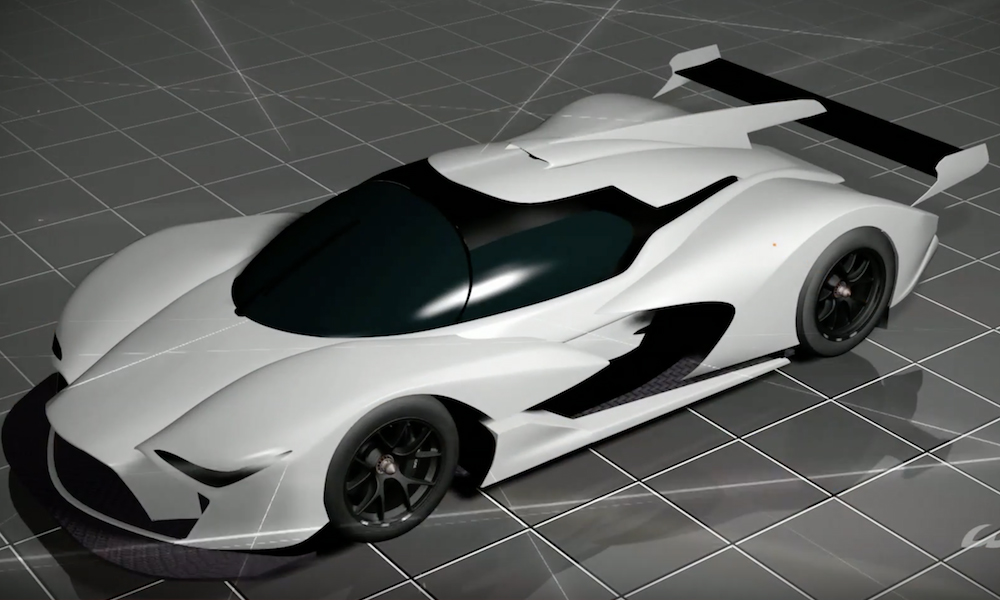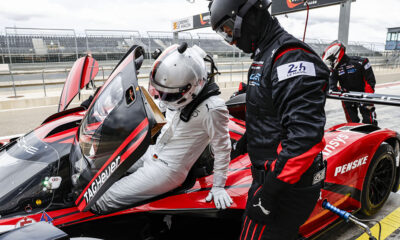
Image: ACO
The costs of the 2020 ‘hypercar’ regulations will be largely controlled by defined performance levels that’s aimed to prevent skyrocketing development costs, according to the FIA and ACO.
Preliminary details of the yet-to-be-named platform, which will replace LMP1 beginning with the 2020-21 FIA World Endurance Championship season, were released on Friday in Le Mans.
While featuring an all-new hypercar-inspired prototype design, FIA technical director Gilles Simon said an overhaul of the homologation procedure will ensure controlled costs to both manufacturers and independent constructors.
The FIA has laid out a target budget that’s one-quarter of current LMP1 hybrid budgets, which is understood to be in the range of €25-30 million ($30-35 million).
“I think the main point from the technical side is to define some targets that you can reach with reasonable work and then stop there,” said Simon.
“For instance, if I limit the downforce, it’s useless to spend huge money on the downforce study in the wind tunnel.”
Simon said that previous open areas of aero development, such as downforce and drag, will be limited within a new set of parameters, which he called a ‘performance point’.
It’s understood to be similar in philosophy to the performance windows utilized in GTE, where manufacturers are given a range of specific targets for power and aero performance and balanced accordingly.
“The philosophy of the homologation process will really have a strong evolution,” ACO Sporting Director Vincent Beaumesnil said. “It’s a complete new process.
“Cars will be measured in the wind tunnel and we’ll have a full scan of the cars.
“With this, we can make sure they can go to the point we want but they don’t go over. They have no incentive to spend budget on this.
“You define values but really the idea is not to spend money on development to get performance. You will not have the reward.”
Each car will be homologated with a single set of bodywork, compared to the two permitted kits currently allowed in the LMP1 hybrid regulations and unlimited evolutions for non-hybrids.
The cars, however, will feature movable aero, which is understood to be similar to DRS systems seen in other championships.
“We believe [movable aero] is the technology that is well used on road cars, so believe it’s the right moment to introduce it there,” said Simon.
Simon said the new platform will produce slightly less downforce than what’s currently seen in LMP1.
“If you want to have efficiency, what we do today with LMP1 is exceptional,” he said. “But this is dictating the look of the cars.
“If we want to have more flexibility in the design of the car and more styling and cars that more looks like hypercars we see on the street, we need to lower this number.”
The powertrain, meanwhile, will see an open engine architecture, controlled by fuel flow, with a maximum performance target of 520kW (700 horsepower) for the internal combustion engine.
When combined with 200kW of electric power, produced by a single front axle-mounted KERS system, Beaumesnil said they’re targeting Le Mans qualifying lap times in the 3:20 range.
It will mark a slight decrease in performance, as well as a reduction in hybrid power from the current 8MJ to around the equivalent of 5MJ per lap of Le Mans.
With the bullet points having been agreed in principle, Simon said they will work on finalizing details of the regulations in the coming months, prior to being presented to the World Motor Sport Council for approval in December.


























